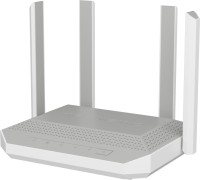All about Wi-Fi 7: how this technology stands out, how much faster it is than Wi-Fi 6, is it worth using now
We independently test the products and technologies that we recommend.

How is Wi-Fi 7 different from previous versions?
During the development of the fourth and fifth versions of Wi-Fi, manufacturers solved the problems of that time, first trying to increase the speed and stability of the connection, then expand the coverage and add new frequencies to offload the connection. Particularly fast progress rushed forward with the advent of the fourth version, which learned to work in the 5-Hz range and better penetrate obstacles and walls thanks to MIMO multiple signal processing technology. In turn, the Wi-Fi 5 expanded the bandwidth by almost 10 times and learned how to more efficiently handle multiple simultaneous connections.
 |
| The evolution of the wireless standard. |
The recent Wi-Fi 6 is the next step in the evolution. The protocol was actually rewritten from scratch, with new WPA3 security protocols and things like BSS Coloring and OFDMA, which allow to process requests from connected clients and distribute network traffic much more efficiently. The Wi-Fi 6E standard, which was presented in the fall of 2021, has learned an extremely important trick – namely, operation at a frequency of 6 GHz. The seventh generation does not solve global problems, but instead expands the capabilities of the existing standard in terms of speed, the number of simultaneous connections, etc.
What problems does Wi-Fi 7 solve?
The development of network protocols frankly does not keep pace with the evolution of modern gadgets and the development of media content. Imagine the dream apartment of an Apple marketer: there is a 4K TV in the hall, several pairs of smart speakers are placed around the house, a PC is in another room, each family member has a smartphone in their pockets, and somewhere else there is a tablet with GeForce Now lying around, which requires a stable and at the same time a wide connection channel. And we have not yet reached the mythical smart home, in which even door locks and light bulbs are connected to the home network.
Let's be honest, even a very good router with a reliable gigabit connection will not be able to simultaneously and stably distribute the network to all gadgets, so many people try to connect the most capricious devices like a TV and PC directly to the router using a cable, and leave all smaller gadgets at the mercy of Wi- Fi. 7th generation Wi-Fi can help reduce congestion on home and office wireless networks. Intel specifically emphasizes the importance of multi-channel work and improved channel efficiency in the new standard. In addition, 8K content is actively promoted in the field of media streaming, and not every router will be able to stably transmit such data packets over the air.
What new technologies will the new standard bring?
If Wi-Fi 6 was created mainly in response to the growing number of mobile devices, then Wi‑Fi 7 intends to surprise with incredible connection speeds. Wi-Fi 7 can simultaneously use three frequency bands, supports 320 MHz channels, 16 MU-MIMO spatial streams, as well as frequency modulation technologies, which in total will significantly increase the stability of the connection if many devices are connected to the network at the same time. And the speed of traffic processing and the number of simultaneous connections will increase.
Four times the bandwidth and data transfer rate
Wi-Fi 6 promised a significant increase in speed by doubling the processing flow. However, in reality, everything turned out to be not so good, and many users did not feel much benefit from the upgrade. In many ways, the 1024-QAM amplitude modulation has become the limiting factor. Wi-Fi 7 uses the 4096-QAM quadrature modulation scheme, which became one of the conditions for increasing bandwidth from 9.6 Gbps (Wi-Fi 6) to 46 Gbps.
Of course, we are talking about theoretical speed, reality always turns out to be harsher and more realistic. Considering the weakening of the signal and the decrease in speed during a wireless connection, Wi-Fi 7 will be able to operate, not on paper, but in reality, with data streams of several gigabytes. For example, during a joint presentation in November 2022, Intel and Broadcom managed to establish a stable wireless connection between a test laptop and a router at a speed of 5 Gbps. In general, Intel management expects that the speed of 5 – 6 Gbps will be just the beginning of the development of a new standard. Compare that to the 1 Gbps that Wi-Fi 6 can deliver.
MLO and ability to work with several frequency ranges
 |
| An example of a parallel connection to several frequency ranges. Source: msi.com |
With the advent of Wi-Fi 6, the problem of a large number of simultaneous connections was partially solved. If Wi-Fi 5 could only work in two frequency ranges of 2.4 and 5 Hz, Wi-Fi 6 added support for a third dedicated band at 6 Hz. Sounds great on paper, but in reality, these connections are independent, so the devices had to choose one of the available frequencies. And if there are a lot of devices, problems began. Wi-Fi 7 solves this issue once and for all with the help of Wi-Fi Multi-Link Operation (or MLO) multi-channel technology, which allows a connected device to exchange data using multiple channels and frequency bands simultaneously. MLO support will help the router balance traffic and build more optimal routes for data transfer, which will be especially important for VR and online games, working with cloud computing systems, etc.
16x16 MU-MIMO
The new protocol doubles the number of spatial streams (note: from 8 to 16), which allows to double the theoretical physical data transfer rate compared to Wi-Fi 6. More streams provide each device with enough bandwidth to run smoothly with a large number of concurrent connections. At the same time, the quality of communication with Wi-Fi 7 will be higher with a minimum of interference, since short waves will not physically reach neighboring apartments, mixing with signals from other routers.
Multi Resource Unit
The Wi-Fi 6 protocol uses the Multi Link Single Radio separation principle, in which 2 channels could alternately exchange data in 2x2 MIMO mode. In the Wi-Fi 7, this principle was finalized and instead of Single Radio, the Multi-Radio principle is used, which does not use the entire continuous 320 MHz channel, but only part of it (80 or 160 MHz), allowing two channels to work simultaneously without interfering with each other.
Preamble Puncturing Technology
 |
| An example of using Preamble Puncturing technology. Source: msi.com |
Preamble Puncturing technology first appeared with the advent of the Wi-Fi 6 standard, but it will get its real development with the release of the seventh version of the protocol. Its essence lies in the ability of connected devices to "cut" a piece of a busy channel for parallel connection. What does it mean? For example, we have a smartphone that is connected to a router at a frequency of 160 Hz, but in fact it uses only part of this band, leaving the rest of the spectrum unoccupied. The Preamble Puncturing feature allows new devices to use the free part of the channel, avoiding conflicts with already connected gadgets.
What else?
It is also worth noting some experimental features of previous versions of the protocol, which were developed in Wi-Fi 7. The BSS Coloring function marks neighboring networks and makes the router ignore them, dividing connected devices into “our” and “foreign”. Thanks to the introduction of functions like Target Wake, the router will be able to save energy by quietly disconnecting inactive devices from the general flow and, if necessary, instantly return them to the general system. In addition, Wi-Fi 7 will be based on a slightly modified WPA3 security protocol.
When will the mass adoption of Wi-Fi 7 start?
 |
| TP-Link Archer BE900: One of the first routers with Wi-Fi 7 support. |
Judging by the Wi-Fi Alliance press release, the development of the new protocol will begin with offices and commercial establishments with high traffic – supermarkets, trade and exhibition centers, festivals, conferences, etc. Wi-Fi 7 is also very useful for creating fast local networks with a minimum of wires and switching. In addition, routers with Wi-Fi 7 support will be useful for using AR and VR headsets, as they may experience resolution compression issues due to limited data transfer rates.
The introduction of standard certification began at the end of 2022, and in recent months several gadgets with support for the new standard have been announced – after updating the firmware, the OnePlus 11 smartphone learned to work with Wi-Fi 7. In February 2023, Xiaomi President Lei Jun announced that Xiaomi 13 flagship smartphones will support the new standard out of the box, and Redmi K60 Pro will receive support for Wi-Fi 7 after one of the updates.
A pack of new generation routers Archer BE900 and GE800 was announced by TP-Link. Well, mass adoption in smartphones will begin in the near future with the popularization of the Snapdragon 8 Gen2 CPU with the FastConnect 7800 microchip and the competing line of Mediatek Filogic CPUs. But, like last time, this is a rather expensive product for enthusiasts, which will only open the doors to the future. Distribution at the household level should not be expected before 2024.
Articles, reviews, useful tips
All materials






























































